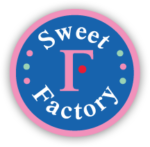In 1981, Universal Studios, together with a young Steven Spielberg, approached Mars Inc. with a product placement concept for an upcoming family-friendly science fiction film – E.T. The Extra Terrestrial. Spielberg was keen to use M&Ms in a key scene of the film featured here:
Unfortunately, Universal Studios refused to show Mars the complete script. As a result, Mars declined the opportunity. Oops!
This didn’t deter Universal for long. The studio knocked on Hershey’s door soon after actually pursuing Hershey Kisses for the scene. Instead, Hershey’s came back and suggested their newest creation as a much better fit – an M&M alike candy they named Reese’s Pieces.
“E.T. The Extra-Terrestrial” went on to be a cultural touchstone and sales of Reese’s Pieces (now billed as “E.T.’s favorite candy”) skyrocketed 65% almost immediately upon release of the film.The movie has since been re-released twice. First in 1985 and again in 2000. Each time, Reese’s Pieces sales surge. What a hit!
Seen on Screen: Product Placement of Reese’s Pieces in 1982
At the outset, candies are fairly easy to make. With only sugar, honey, and water as main ingredients, everyone can make one at home. That said, only a few candy brands are known in the world. Today, big and leading names are Mars, Ferrero, Meiji, and Hershey’s, to name a few.
These companies, empires even, make global candy sales worth billions of US dollars. Of the many factors affecting their success is their marketing strategies. On this page, find out the rapid surge of Reese’s Pieces through product placement.
From Mars to Hershey’s
As the old saying goes, ‘when one door closes, another opens.’ While it sounds hopeful, it is a bit firmer and aggressive in the world of business. The result of one company’s failure in taking advantage of an opportunity is a bold treasure picked up by another. This is the 1980s story of Mars Inc., the Hershey Company, and the hit film E.T. the Extra-Terrestrial.
In 1981, Universal Studios and Director Steven Spielberg approached Mars. They offered a product placement for its flagship product, the M&Ms. For whatever reason, the company refused for their brand to be featured in the film.
That said, a variety of sources shared alleged reasons for its rejection; saying that the film was a bit ‘otherworldly’ to be linked with a candy. Others, however, did mention that it might frighten children. Yet whatever it was, the company’s refusal laid the foundation for Hershey’s approval.
Since Universal Studios offered the product placement, Hershey did not pay the film production. But, it did accept a tie-in sales agreement, where the candy company promoted the film with US$1 million of advertising. In exchange, it had the right to reference the film in its own ads.
With the global success of the film comes also the upsurge of sales for Hershey’s. By just 2 weeks after the premiere, its profits soared up to 65% due to Reese’s Pieces. All owing to Elliott’s smart tactic to lure the shy little alien, the product is still manufactured with several variations and distributed worldwide.
Other films with successful product placement
With the right timing and firm grasp, the story of Mars and Hershey’s shows the potential power of product placement. Here are other films that had successful yet also excessive product placement.
- Back to the Future: Mountain Dew, Pepsi, Pizza Hut, Nike, and 7-Eleven
- Toy story: Mr. Potato Head and Etch-A-Sketch
- The Great Gatsby: Prada and Miu Miu
- Sex and the City: classic Western designers (Gucci, Chanel, and Dior)
- I, Robot: Audi and Converse
Read more
For decades of fulfilling the cravings of Calgary residents, Sweet Factory is a fashion aficionado at heart. Our team is pretty active in the community. But when it is fashion time, the store leads the programme! Last month, we hosted a candy/fashion show in Calgary. See the amazing creations of the locals here on this page: Calgary’s Candy Fashion Week.
